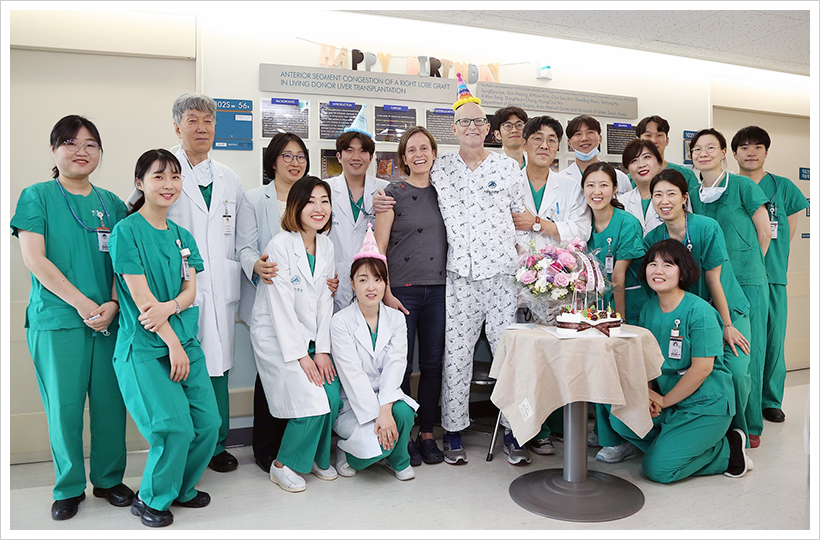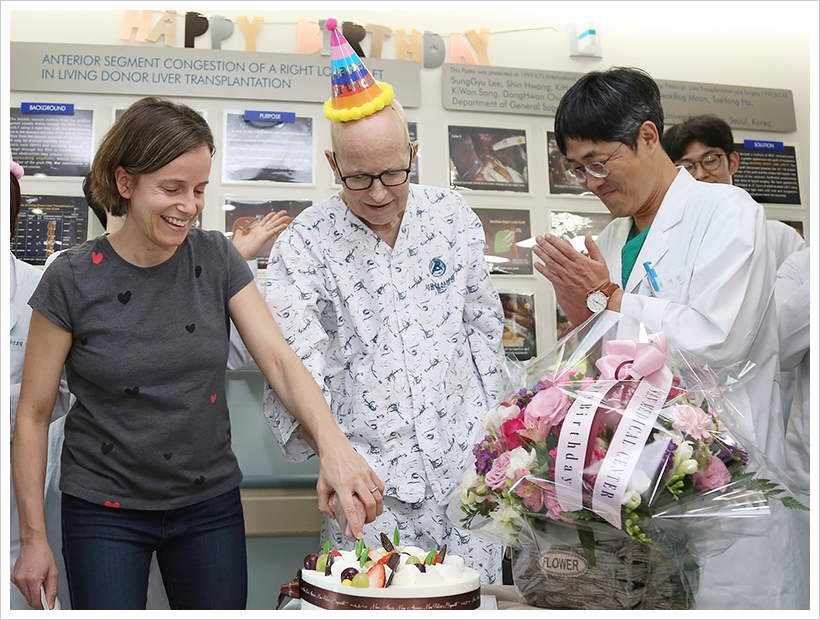RELATED Live.
- About us
- KIMA Members
-
KIMA Doctors
- All
- Anesthesiology
- artificial joint center
- Breast and Endocrine Surgery
- Breast cancer and thyroid cancer center
- Breast Surgery
- Cardiology
- Cardiothoracic Surgery
- Cerebrovascular Center
- Colorectal Surgery
- dental and maxillofacial surgery
- Dermatology
- Endocrinology
- Gastroenterology
- General Surgery
- Genito-Urology
- Hematology
- Hemato-oncology
- Infection Center
- Internal Medicine
- International Healthcare Center
- Korean Medicine
- liver center/Pancreas and billiary tract center
- Liver Transplantation
- Neurology
- Neurosurgery
- Obstetrics & Gynecology
- Ophthalmology
- Orthopedic
- Otorhinolaryngology
- Pediatric & Juvenile
- Pediatric Allergy and Respiratory Diseases
- Pediatric Gastroenterology
- Pediatric Neurology
- Pediatrics
- Physical Medicine & Rehabilitation
- Plastic & Reconstructive Surgery
- plastic surgery
- Pulmonology
- Radiation oncology
- Rheumatology
- Thyroid & Endocrine Surgery
- Urology
- Vascular Surgery
- KIMA News
- KIMA Live
- Community
KIMA NEWS

A liver cirrhosis patient, who had difficulties in delivering results at a renowned university hospital in the United States, underwent a liver transplant operation at Asan Medical Center in Seoul, Korea, and recovered after two months of treatment. This patient was referred by medical staffs at Stanford University Hospital in the United States with a belief in the ability of transplantation in Korea, and it proved once again that the domestic medical service is recognized in the world.
On 2011, CHARLES CARSON, a 47-year-old man who worked as a search engine s
oftware engineer in Silicon Valley, USA, was diagnosed with cirrhosis and bone marrow dysplasia syndrome. Bone marrow dysplasia syndrome is a very dangerous disease that blood cells, such as platelets and white blood cells, decrease due to abnormal hematopoietic stem cells, which can eventually cause immune dysfunction, infection, hemorrhage, and progression to chronic leukemia.

Mr. Carlson had more than 10 cycles of chemotherapy for bone marrow dysplasia syndrome at Stanford University Hospital in the United States, but became unable to continue the treatment as liver function got worse. He then registered on a waiting list on the United States Organ Transplantation Network (UNOS) but the long waiting time was a problem. With uncertainty whether or not he would get a liver transplant from a brain-dead patient, time passed by helplessly and his condition got worse throughout time. The only option for Mr. Carlson to get healthy again was to receive a liver transplantation from a donor. However, all liver transplant centers in the United States, which have relatively experience with liver transplantation, were reluctant to undergo surgery because they were unable to guarantee recovery after surgery due to accompanying bone marrow disease. They were afraid that the patient's condition may deteriorate rapidly even with very minor surgical complications.
A professor, majored in liver at Stanford University Hospital, suggested Mr. Carlson that “the liver transplantation is more advanced in Korea than that in the US and referred him to Asan Medical Center. Mr. Carlson also decided to go to South Korea after looking at the performance results of transplantation team of Seoul Asan Medical Center, which the liver transplantation survival rate was 97%, exceeding 89% in the United States. On December 19, last year, the liver transplant team at Seoul Asan Medical Center carried out liver transplantation of Carlson. The donor was his wife (HEIDI CARSON, 47 years old). For the donor, minimal incision technique was performed to minimize the incidence of scarring and complications by issuing only a small incision of about 10 cm in the abdomen, and 62% of the liver was resected safely and successfully. 'Over the two months I spent in Korea, I was able to concentrate on the recovery without any inconvenience, because all the medical staffs took great care of my health; I want to go back to the US, play games with my kids and enjoy everyday life; I am grateful to all medical staffs at Asan Medical Center who helped me and my family recover ordinary happiness,' said Mr. Carlson.'When the patient was first referred to the hospital, a result could not be guaranteed since he was suffering from hydrops abdominis due to liver cirrhosis, and he was weakened from several cancer treatments. The patient had a strong understanding of his illness and a strong will to be cured. In the course of treatment, not only physicians but also intensive care nurses shared daily the patient's condition, struggled and worked together. Even when the patient's condition took a serious turn, the patient and his families followed the course of treatment with trust, and therefore the patient was able to get good results,' said Lee Seung-kyu, a professor at Seoul Asan Medical Center. He said, 'Although the liver transplantation has developed in the United States with an active organ donation system, Korea has higher performance rate of living donor liver transplantation, and thus foreign medical scientists visit to learn medicine. It is very encouraging that Stanford University Hospital, one of the top 10 hospitals in the United States, acknowledges the level of medical care and refereed the patient. [he] will continue to study for patients all over the world who need transplantation in the future.'
RELATED Doctor
RELATED Members
Inquiry